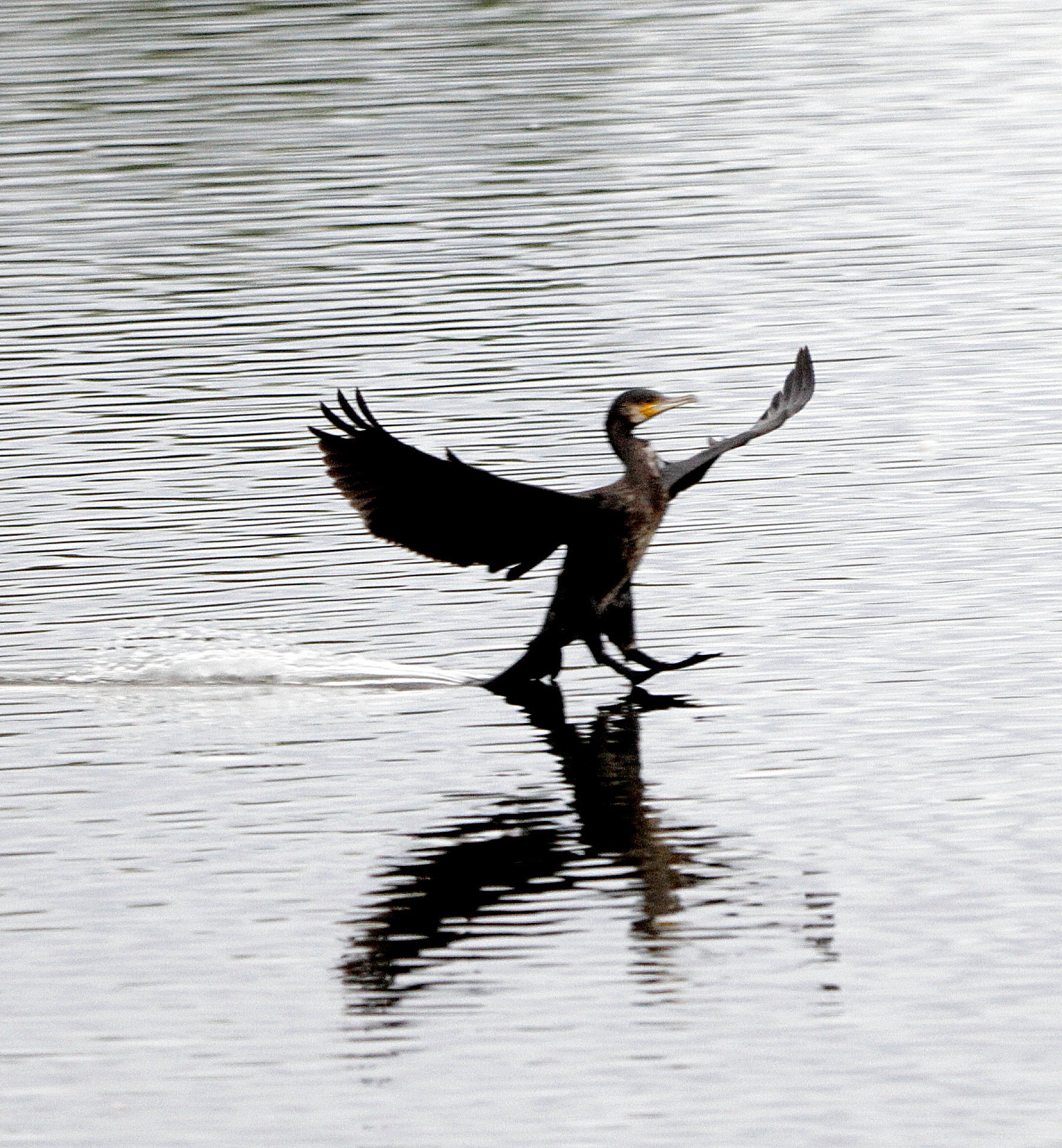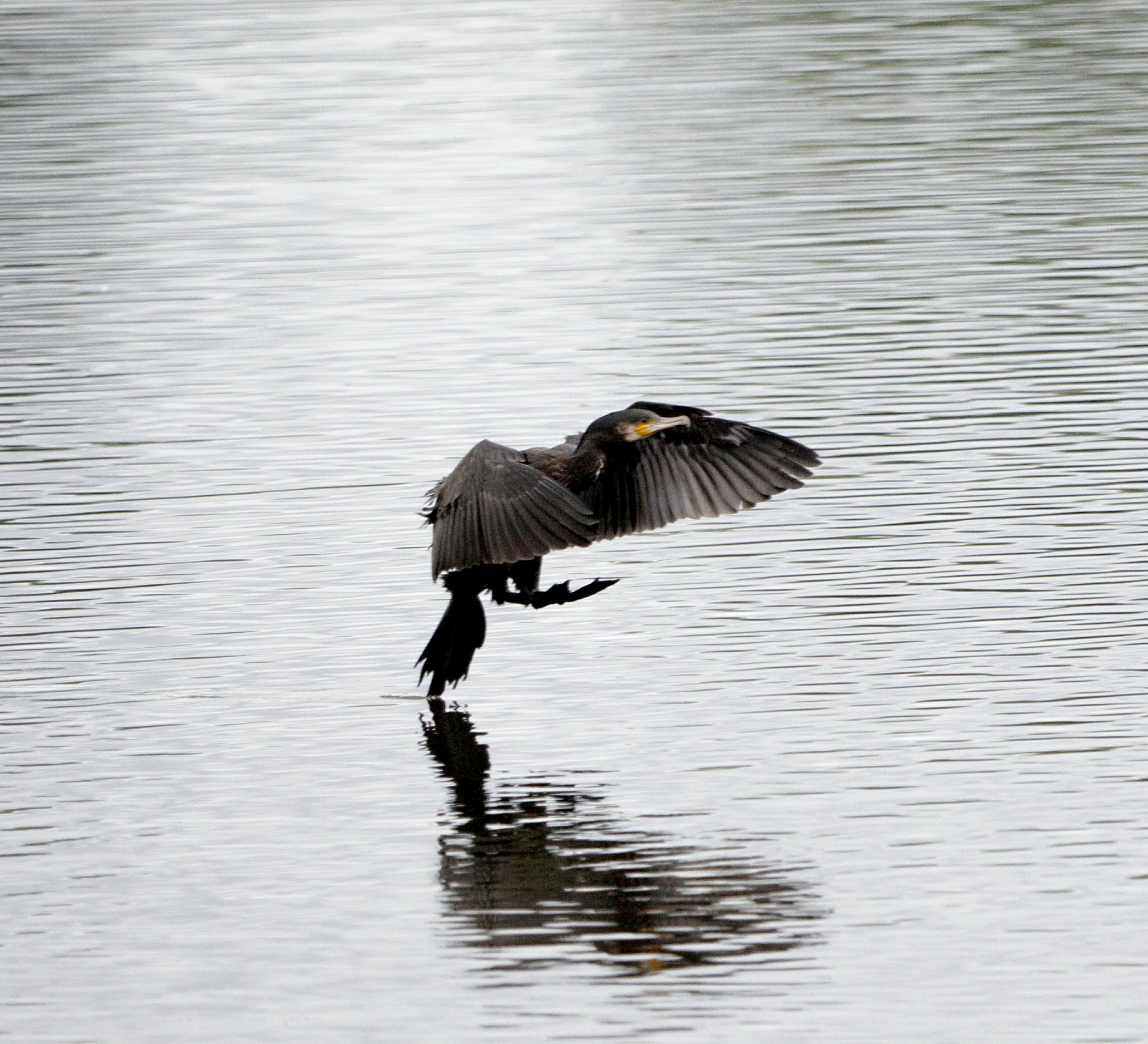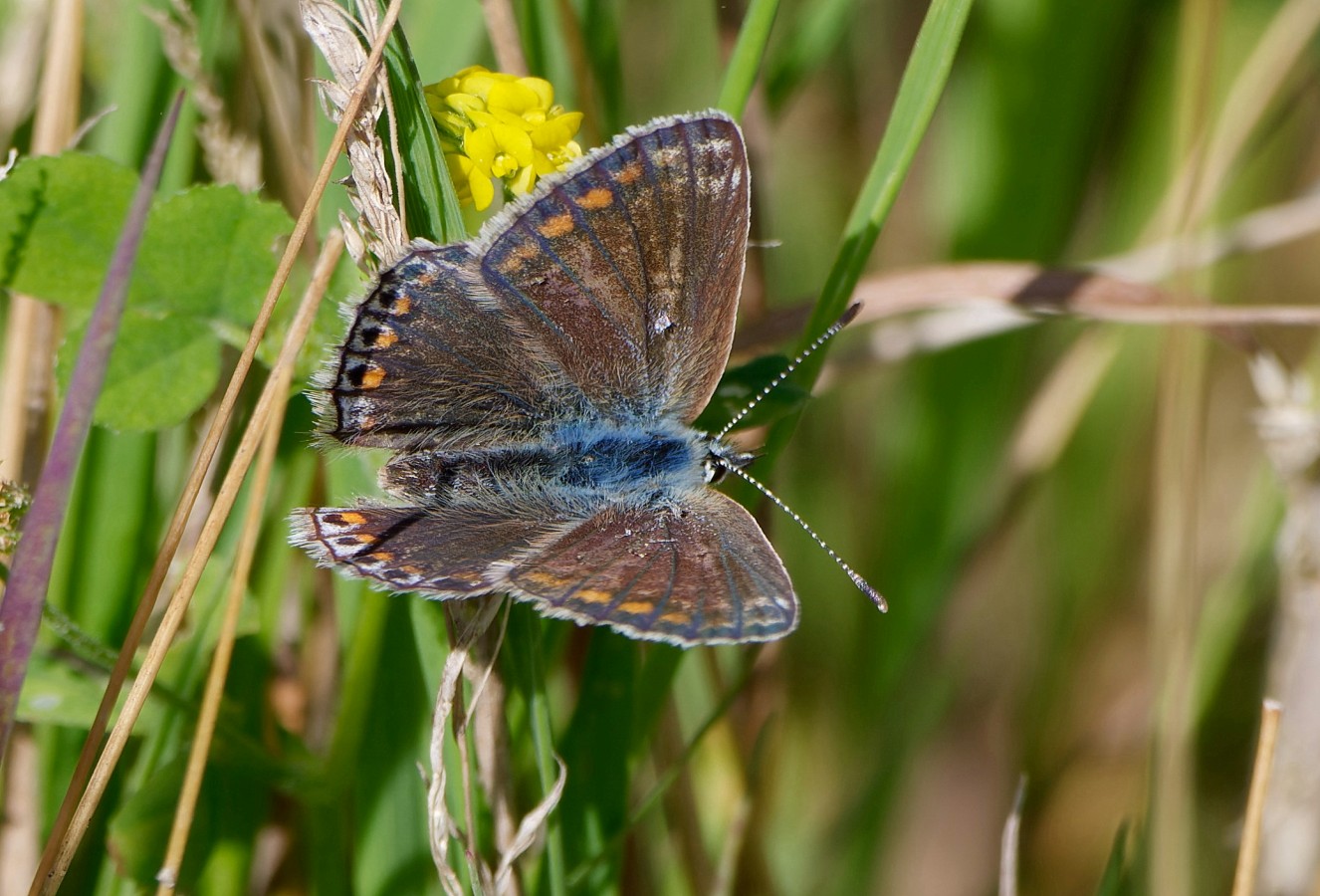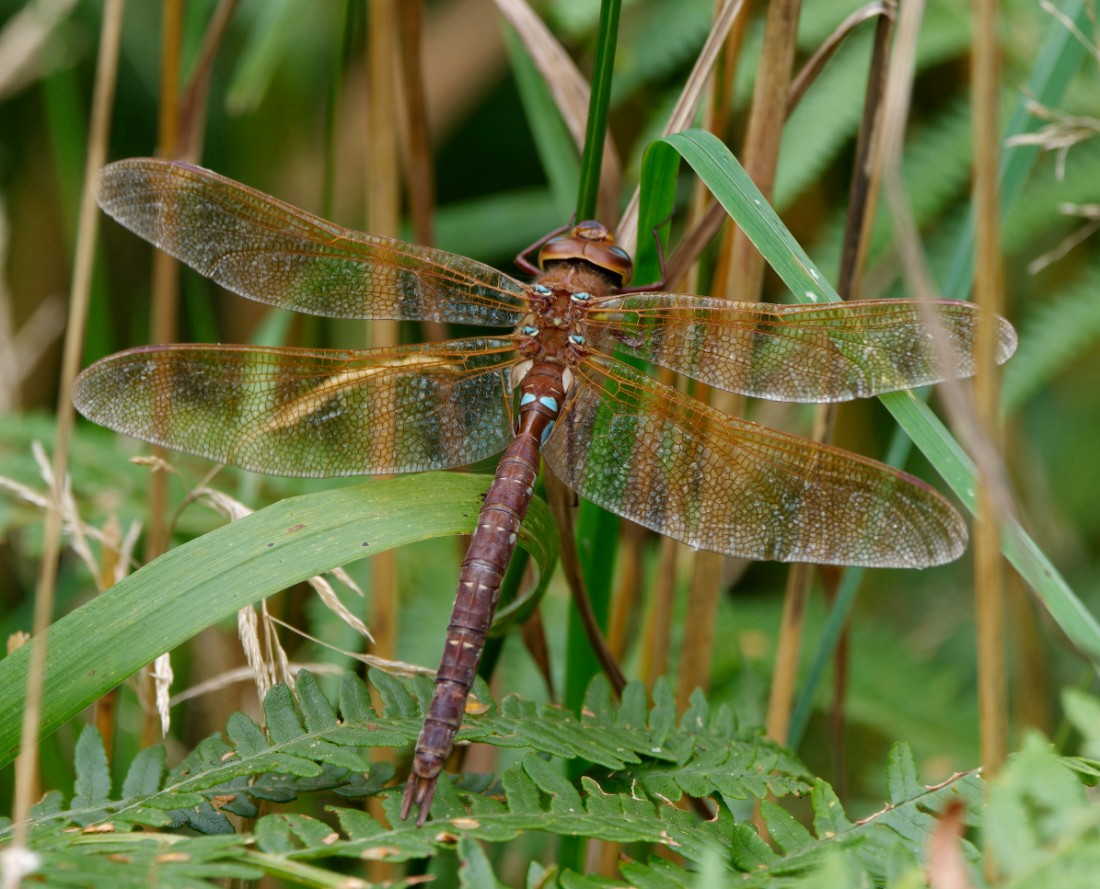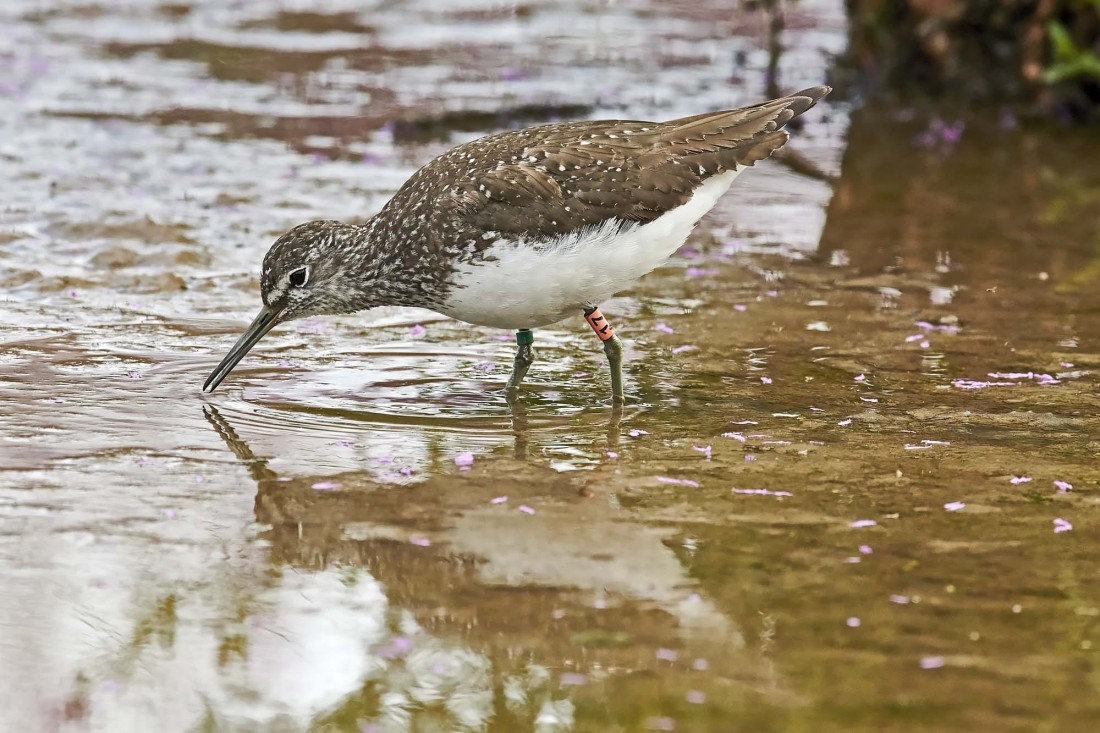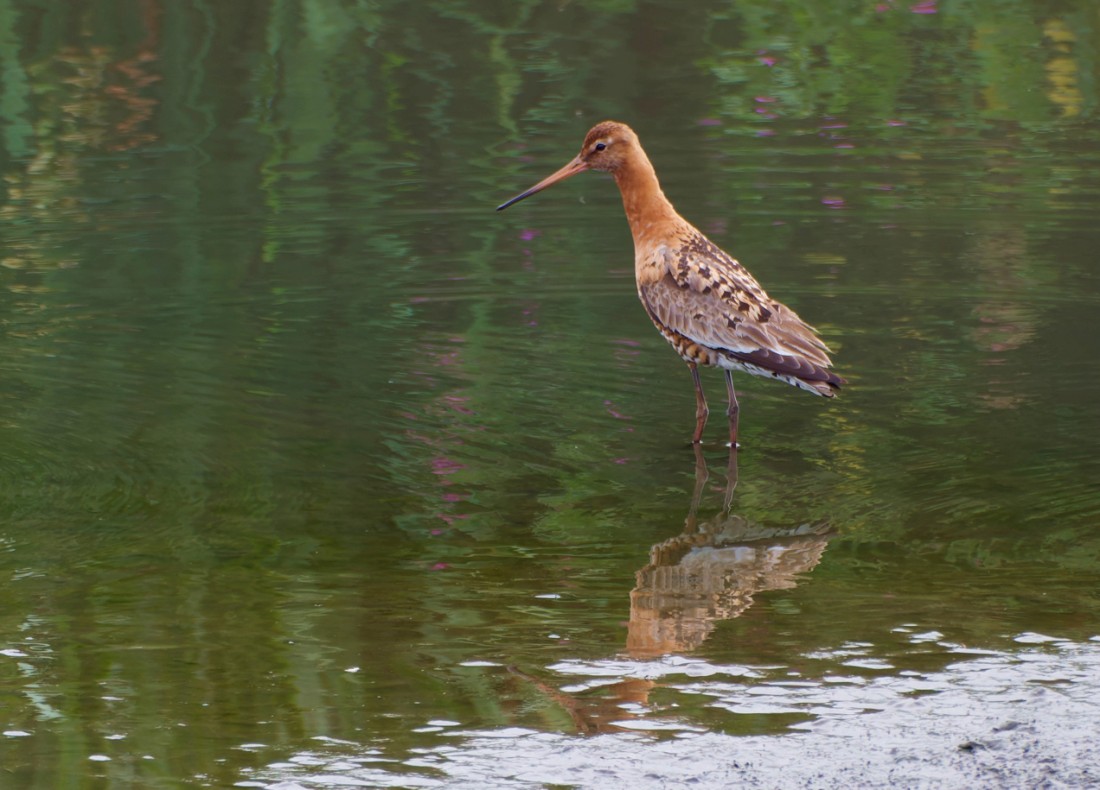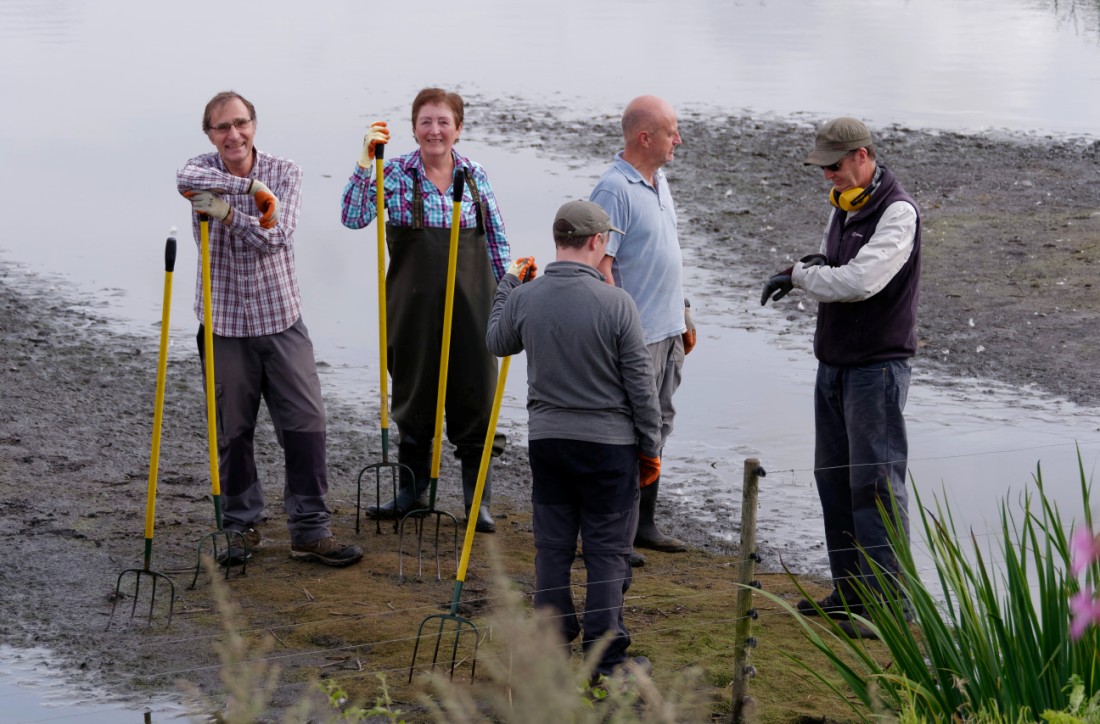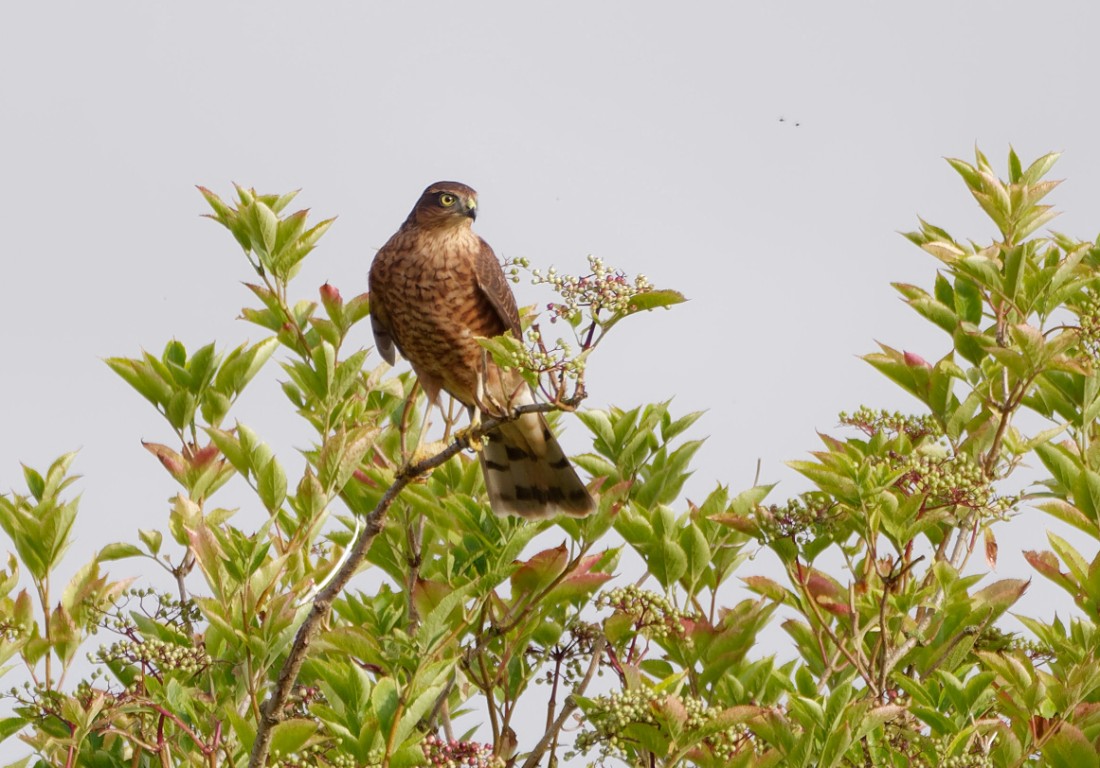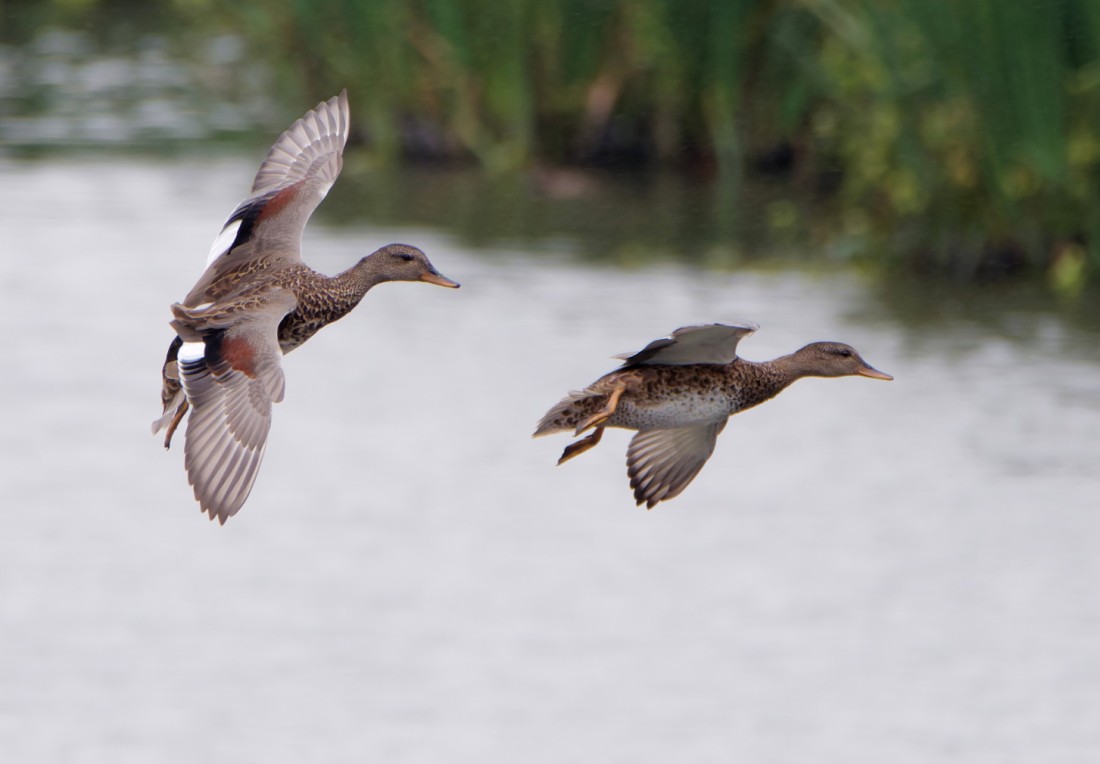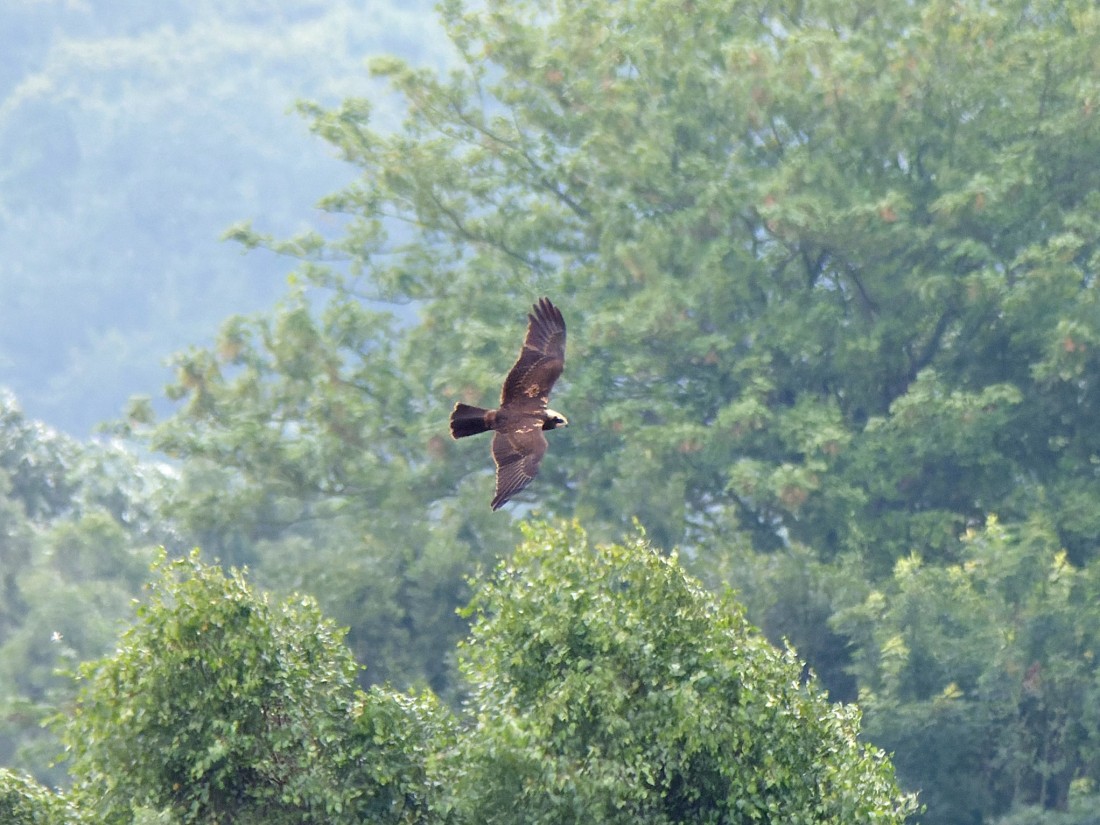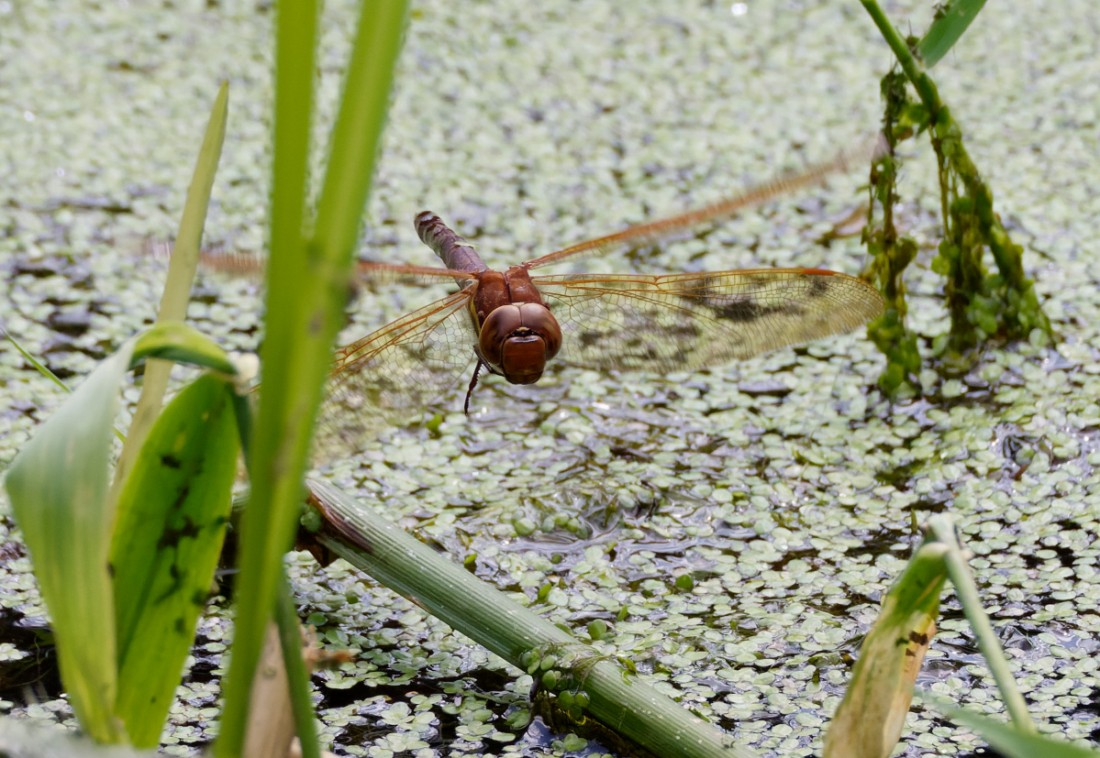Woolston Eyes Monthly Sightings
2021-08-31
It was a morning for waders, starting with a couple of Green Sandpipers and a single Snipe on No.3 bed, with a Water Rail showing well, too, before we walked on to No.4 bed to do a systematic survey of the new wetland. There had clearly been an influx of Snipe, with 61 counted plus another 6 Green Sandpipers (with another reported from near the Weir Basin), bringing the total of the latter to 9. Other totals from the wetland included: 1 Raven, 150 Coot, 35 Lapwings, 30 Linnets, 17 Pied Wagtails, 1 Grey Wagtail, 50 Gadwall, 40 Teal, 35 Mallard, 12 Reed Buntings, 5 Reed Warblers, 2 Sedge Warblers, 1 Whitethroat and 20 Chiffchaffs. Then back on No.3 bed, not much was moving, other than six Swallows heading south. Eventually we were rewarded with a Greenshank dropping onto the scrape. The speed with which it caught and devoured dozens of small fish suggested that it had made a long flight and was in urgent need of refuelling. Greenshanks breed in north and west Scotland, as well as right across Fenno-Scandia and migrate through the UK en route to African wintering grounds. Photo of the Greenshank Cheers David (with Dan Owen)
Submitted by: David Bowman
2021-08-26
A steaming hot morning at Woolston Eyes started on No.3 bed, with 3 Green Sandpipers and 8 Wigeon soon after dawn, along with 75 Teal and 40 Shovelers. More unusual was the flock of 12 Cormorants which dropped in to cooperatively corral large shoals of small fish, catching sizeable numbers before finally dispersing. I then headed over to No.4 bed to make some counts. On the new wetland, 3 more Green Sandpipers, 14 Snipe, 2 Swifts, 135 Coot and 40 Teal were the highlights until I flushed 2 Northern Wheatears from the drier areas. The butterfly and dragonfly numbers were good, too, with: 2 Painted Ladies, 2 Brimstones, 7 Common Blues, 3 Skippers, 5 Commas, plus plenty of Meadow Browns, Gatekeepers, Peacocks, Small Tortoiseshells and various Whites. Of the dragonflies, Common Darters predominated, with 55 in total. Photo of a female Common Blue Cheers David
Submitted by: David Bowman
2021-08-24
The morning started well with a Greenshank and two Curlews passing through No.3 bed, while a couple of Green Sandpipers also put in an appearance. Then it was over to No.4 bed wetland which already supports large numbers of birds, the pick of which were: 3 Green Sandpipers, 10 Common Snipe and a single Swift. A nice surprise came when Brian Martin located a late-staying adult Black-necked Grebe from the Loop Hide, as they have usually all departed earlier in August. Then, back on No.3 bed it was intriguing to watch 11 Common Buzzards soaring together at great height before all gliding away in a south-easterly direction, suggesting, perhaps, that they might be moving from more northerly breeding grounds. Photo of a Brown Hawker Cheers David
Submitted by: David Bowman
2021-08-22
Saturday was fairly still and quiet so it was a morning for enjoying close views of the regular species. A recent, early morning occurrence has been the mass movement of several hundred Gadwall from the new No.4 bed wetland, over No.3 bed, to No.2 bed. The latter is now well-flooded and is probably offering some good feeding for these dabbling ducks. A few Snipe are now trickling in, with 4 on No.3 bed and another 6 on No.4 bed. Green Sandpipers, though, are the main feature wader of our autumns, with double figure counts possible. Two were in front of the Morgan Hide, with another 6 on No.4 bed and no doubt more were dotted around the Reserve, as they often linger on quite small sheltered pools, of which we have plenty! Over the past few years Kieron Foster and his team have been colour-ringing Green Sandpipers and a couple have been reported from further north on the Fylde coast. On Thursday we were pleased to hear that another one was photographed at Slimbridge in Gloucestershire by Geoff Slocombe. (see photo). The link is to a short video showing some of the birds from the past couple of days, including a distant Ruff, Green sandpiper and Black-tailed Godwits.
To watch David’s video CLICK HERE…. or copy the following link into your browser
https://youtu.be/fOZcc3WEjCk Cheers David
Submitted by: David Bowman
2021-08-19
A warm morning, with intermittent drizzle and a light south-westerly wind, produced a nice trickle of waders. Early on from the Morgan Hide we were treated to a nice juvenile Ruff, the first of the year for the Reserve, which touched down briefly before flying west. Then 3 Black-tailed Godwits dropped in to feed voraciously in front of the Morgan Hide, having completed another leg of the migration from their Icelandic breeding grounds. Towards lunchtime we wandered over to No.4 bed where we managed to relocate the Ruff feeding out on the new wetland, flushing 5 Green Sandpipers on the way. The Ruff brings the wader list for the new wetland to 16 species so far this year, which bodes well for the future, when the remaining 3/4 are also flooded. Other counts of note included: 60 Lapwings, 70 Coot, 240 Gadwall, 70 Shoveler, 55 Swifts, 25 Swallows, 8 House Martins and 2 Sand Martins. Photo of an adult Black-tailed Godwit Cheers David
Submitted by: David Bowman
2021-08-17
With overcast skies and intermittent light drizzle it wasn’t the best morning for migration, though persistent observation from the Morgan Hide brought some nice sightings. Four different Green Sandpipers visited the scrape, including a colour-ringed individual from a previous year, with at least another six recently counted on the No.4 bed wetland. Other birds passing through included a Common Tern, 30 Swifts, 6 Swallows, 20 House Martins and 12 Sand Martins, while a drake Wigeon also dropped in. Wildfowl numbers were good, too, with both Shoveler and Teal increasing to around 50 and 280 Gadwall flushed by the locally fledged juvenile Marsh Harrier. As we walked off the bed in early afternoon our parting gift was a Hobby stooping at a passing Swift. The link is to a short video opening with a Kingfisher and then showing this morning’s Green Sandpipers. To watch David’s video CLICK HERE… or copy the following link into your browser.
https://youtu.be/fX9VES3JwsU Cheers David (with Dan Owen)
Submitted by: David Bowman
2021-08-15
At this time of year on No.3 bed we lower the water levels to create muddy margins and provide feeding for passing waders. We also clear vegetation from the breeding islands, which increases their attractiveness to waders, as well as putting them in good order for next year’s breeding season. One of the key species we now look for is Green Sandpiper. This small sandpiper is dark brown and speckled above, snowy white below and shows a white rump in flight. It is a common bird breeding bird across north-east Europe and Asia, is usually seen in small numbers in the UK on migration, though an estimated 900 do stay for the winter. The Reserve is maybe the best place in Cheshire to see them well. This morning three were feeding in front of the Morgan Hide, with another six on the No.4 bed wetland. Other sightings of note included: 2 Black-tailed Godwits, 6 Snipe, 1 Kingfisher, 12 Swifts, 1 Sand Martin and 6 House Martins. Photo of a Green Sandpiper Cheers David (with Alan Warford, Dave Steel, Sue Haddock and Brian Baird)
Submitted by: David Bowman
2021-08-12
A dawn start at produced some nice sightings on a beautiful morning with, as is so often the case, the best saved for last. From the Morgan Hide, a Hobby sped over and a Green Sandpiper was also noted. Then it was a leisurely wander round No.1 bed with its network of pools and flower-rich grasslands. 3 soaring raptors drew our attention as juvenile Peregrine and Sparrowhawk were mobbing our recently fledged juvenile Marsh Harrier. The young Peregrine was particularly pleasing as we had begun to think that our resident Peregrines had failed to raise young for the first time in fourteen years. Two Yellow Wagtails then dropped in while Little Ringed Plover and Snipe added to the variety. Most notable, though, was the sheer volume of insect life. Hundreds of dragonflies and grasshoppers were flushing out of the grassland as we walked and we also had a good count of 39 Common Blue butterflies. Back on No.3 bed, 10 Black-tailed Godwits were added to the 3 reported earlier From No.4 bed. As our stalwart group of volunteers, led by our warden Lizzie Hill, beavered away clearing the vegetation from the Morgan Hide scrape, we were astonished to see a Water Vole swim in front of us and dive into a hole on one of the islands. Our Water Vole population was exterminated decades ago by the feral American Mink and it would be a real delight if they could re-establish a breeding population. Fingers crossed. Photo of our volunteers! Cheers David (with Daniel Owen and Dave Steel)
Submitted by: David Bowman
2021-08-10
It was one of those overcast and rather humid late summer mornings, when you have to work hard to locate a trickle of passing migrants. Early on, on No.3 bed, Common Terns were heard a couple of times before one was finally seen heading west. Interestingly, the last few groups of Common Terns to pass through have been in company with juvenile Black-headed Gulls and the same held true today, with 45 gulls following close on the heels of the tern. A juvenile Marsh Harrier, presumably from the Reserve’s first successful nest, was then hunting over the bed for most of the morning and a couple of duelling juvenile Sparrowhawks also probably fledged on the Reserve. Wader passage, though, was almost non-existent, with just a single Oystercatcher passing by, though a trek around No.4 bed did produce three Green Sandpipers. Perhaps most pleasing on No.4 bed was to relocate the two juvenile Teal first seen a couple of weeks ago, as broods of Teal have proved elusive in recent years. Photo of a juvenile Sparrowhawk Cheers David (with Dan Owen)
Submitted by: David Bowman
2021-08-07
An overcast day at Woolston Eyes, with a light southerly breeze and intermittent drizzle, produced ideal conditions for Swifts to be moving south. We counted 330 over the morning, along with a handful each of Swallows, Sand Martins and House Martins. The migratory urge was also being felt by one of our last three remaining juvenile Black-necked Grebes, which was indulging in short, low level flights, testing its wings before the long haul to its presumed wintering quarters off the coast of West Africa. Though the peak time for moulting numbers of Gadwall is now past, there were still a few hundred across Nos.3 and 4 beds, along with 6 Green Sandpipers and a single Redshank. Another kind of Redshank, the plant Polygonum persicaria, also featured, as a vast area of the new No.4 bed wetland is now carpeted with it. It produces a large amount of seed on which wildfowl and particularly Teal, love to feed. When the seed falls and the wetland finally floods later this year, we are hoping for a real wildfowl bonanza. Photo of a pair of Gadwall Cheers David (with Helen Wynn, Dan Owen, Dave Steel and David Spencer)
Submitted by: David Bowman
2021-08-05
Some really pleasing news, with the first confirmed breeding of Marsh Harrier. We’ve waited a long time for this to happen and it was good to watch a fledged juvenile soaring over the nest site and then hunting independently. The species is really starting to get a foothold in Cheshire & the Wirral and we will hopefully see them start to spread to other suitable sites. Otherwise, the light south-easterly wind encouraged a light passage of hirundines, with 32 House Martins, 16 Swallows and 12 Sand Martins moving low into the breeze and stopping briefly to feed, skimming over the water before carrying on southwards. There were a few waders around, too, with counts of: 6 Little Ringed Plovers, 4 Green Sandpipers and 5 Snipe. Other counts of note included: on No.1 bed, 1 Yellow Wagtail, 26 Chiffchaffs, 64 Stock Doves, 80 Linnets and 2 Ravens, while No.4 bed held: 1 adult Black-necked Grebe, 120 Lapwings and 150 Goldfinches. Photo of the juvenile Marsh Harrier Cheers David (with Dave Steel)
Submitted by: David Bowman
2021-08-03
While No.3 bed was pretty quiet early on, No.4 bed was full of life from the start. Around 100 Lapwings are regularly roosting there at the moment and when they flushed in response to a low flying Buzzard, a Wood Sandpiper and 4 Green Sandpipers also took flight. While the latter are fairly common on the Reserve during the autumn, Wood Sandpipers, which are trans-Saharan migrants, are much scarcer and it’s always a pleasure to find one. In addition, 12 Common Snipe dropped in, while a single moulting adult Black-necked Grebe was still on the Loop of the bed. While, typically, Gadwall numbers are starting to fall away from their July peak of 800, there were still around 100 feeding alongside 75 Coot. Back on No.3 bed, my contention that the Lesser Black-backed Gulls from the local breeding colony might have had only a moderately successful breeding season was well and truly scotched when 175 juveniles arrived en masse to harass the many broods of Tufted Duck which are still spread around the bed. Finally, Dan Owen and Kieron Foster were treated to a fly-past by a couple of calling Crossbills, another scarce visitor to the Reserve and a nice note to finish on. Photo of a Brown Hawker Cheers David
Submitted by: David Bowman
2021-08-01
This link is to a short video from the past couple of days and shows: a Tufted Duck brood, Common Terns, a male Ruddy Darter, juvenile and adult Little Ringed Plovers, a female Marsh Harrier, a Black-necked Grebe moulting into winter plumage and a Kingfisher.
To watch David’s video CLICK HERE… or copy the following link into your browser.
https://youtu.be/A2r_uKc3Q9E Cheers David
Submitted by: David Bowman


